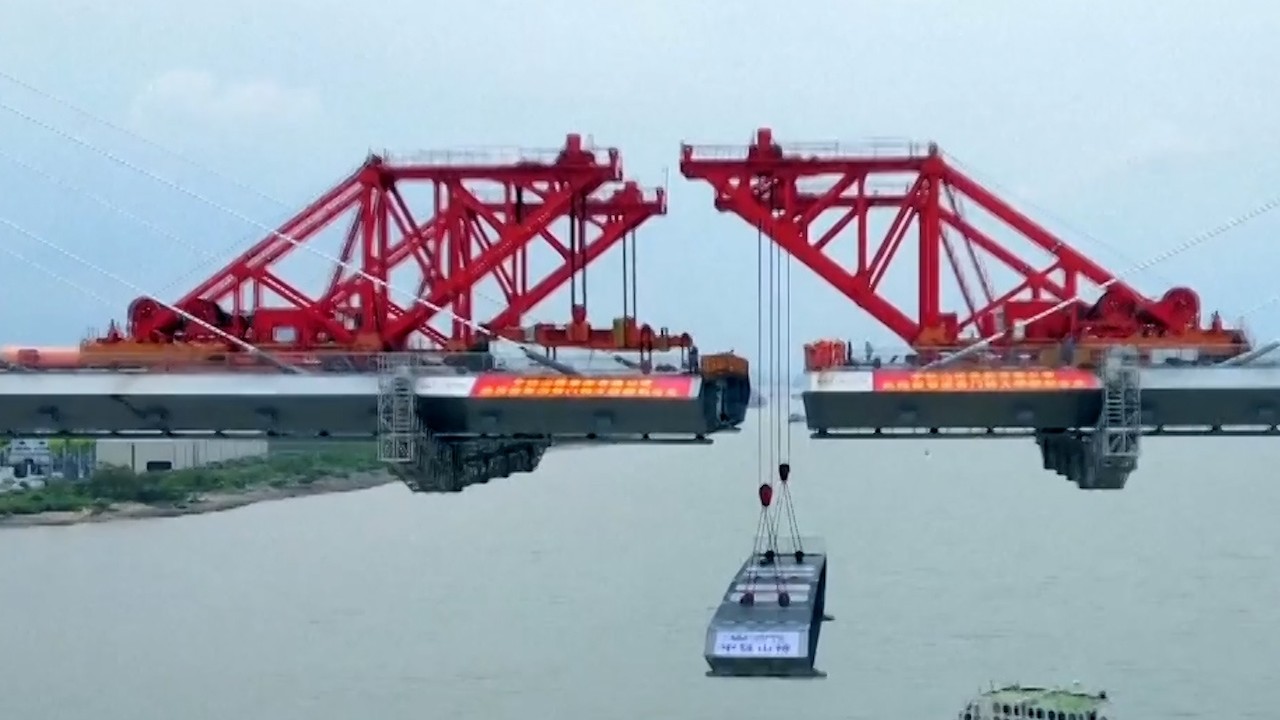
European firms cool on China’s Greater Bay Area, ‘not benefiting’ from its US$1.8 trillion economy
- European Union Chamber of Commerce in China survey showed less than half of the firms expressed optimism for the Greater Bay Area
- Obstacles for the region, that had an economy of 13 trillion yuan (US$1.8 trillion) last year, stem from the competition between cities rather than policy coordination
European businesses have reported a plunge in optimism for China’s Greater Bay Area, the highly valued southern city cluster that includes both Hong Kong and Shenzhen, raising questions over how Beijing should improve its attractiveness to hold on to foreign investors.
Only 44 per cent of the 75 companies surveyed by the European Union Chamber of Commerce in China expressed optimism for the region’s grand development plan, compared to 68 per cent a year earlier.
Many South China members are reporting that they are not benefiting from the Greater Bay Area
“Many South China members are reporting that they are not benefiting from the Greater Bay Area,” said Klaus Zenkel, head of the chamber’s south China chapter.
According to the poll jointly conducted with consultancy firm Roland Berger, 52 per cent of firms stayed neutral to the plan, a rise from 31 per cent a year earlier.
Some 4 per cent of the firms surveyed, meanwhile, pointed at a highly pessimistic outlook for the scheme to link Hong Kong, Macau and nine mainland cities of Guangzhou, Shenzhen, Zhuhai, Foshan, Zhongshan, Dongguan, Huizhou, Jiangmen and Zhaoqing into an integrated economic and business hub.
Obstacles mainly stem from the competition between cities rather than uniform policy coordination, according to Zenkel.
The Greater Bay Area development blueprint was released in 2018, with the aim to build a world-class growth engine to rival the bay areas of Tokyo, San Francisco and New York.
More than two thirds of the surveyed European firms said Chinese authorities should do more to clarify the business opportunities available for both Chinese and foreign companies.
Analysts have called for more policy coordination within the city cluster, as mainland cities in the region generally have a relatively high degree of overlap in areas such as manufacturing, finance and technological innovation, which has led to a certain level of similarity in their converging industrial structures.
“There is more homogeneous competition between cities in the Greater Bay Area, especially the two leading cities – Guangzhou and Shenzhen,” said Yuan Chenjie, the principal representative at private equity firm SAIF Partners.
“They are different from the ones in Yangtze River Delta, such as Shanghai, Suzhou and Wuxi, as the latter each have their own positioning and they can achieve complementary and virtuous development.”
Industrial support among cities in the Greater Bay Area is not yet complete, and there is the problem of homogeneous competition
A report earlier this month by Yuekai Securities also pointed to a lack of integration between cities in the Greater Bay Area and a homogeneous industrial landscape.
“Industrial support among cities in the Greater Bay Area is not yet complete, and there is the problem of homogeneous competition,” the report said.
The Yuekai Securities report said that market rules are not uniform, with Guangdong province and the special administrative regions of Macau and Hong Kong having differences in industry regulation and intellectual property protection, and a split in the policy pilot areas within the Pearl River Delta.
“These can lead to businesses facing additional systemic costs,” the report added.
Meanwhile, the lack of talent and “outstanding risk” of its industries facing technological sanctions from Washington are creating more uncertainties to the prospects of the Greater Bay Area, the report said.
Peng Peng, executive chairman of the Guangdong Society of Reform, said the nine mainland cities need to draw more on the practices of Hong Kong, Macau or even Singapore, to address the concerns of foreign investors.
“After all, Hong Kong and Singapore have the best business environment in the world,” Peng said.
The combined economy of the Greater Bay Area stood at 13 trillion yuan (US$1.8 trillion) last year, with Shenzhen, Guangzhou and Hong Kong contributing the most, according to the Hong Kong Trade Development Council.


